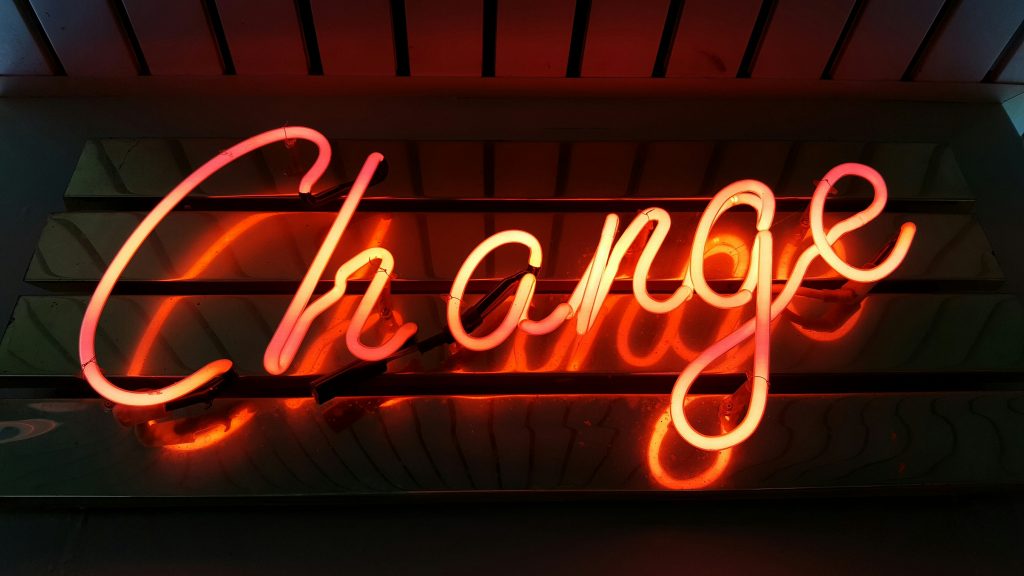
What is exposure? Imagine these scenarios:
– A person with social anxiety disorder strikes up a conversation with a new colleague at an after-work party.
– Someone with agoraphobia takes the bus on a hot day.
– A client with panic disorder runs, deliberately speeding up their heart rate.
Exposure exercises like these may sound like a nightmare to some clients – and therapists alike (see Schumacher et al., 2015; Waller, 2009) – but they are a core element of many Cognitive Behavioural Therapy (CBT) programmes for anxiety disorders (Foa et al., 2016). Importantly, many studies show that they work (e.g., Foa et al., 2016; Ougrin, 2011; Parker et al., 2018).
With exposure, people with anxiety disorders are exposed – either in imagination, virtually or in real life – to situations that they expect to bring about some catastrophe, and which therefore cause them fear and anxiety. The inhibitory learning model (Bouton, 2002; Craske et al., 2014) predicts that when the expected catastrophe doesn’t happen, the mismatch between the original expectancy and the final non-catastrophic outcome leads clients to conclude that there’s nothing to be anxious about, paving the way to recovery.
But what if some clients perceive this same mismatch not as proof that there’s nothing to fear anymore, but as a lucky escape? Will exposure still work? Pittig et al. (2023) provide insight into these questions based on data from a large multicentre trial conducted in Germany (Heinig et al., 2017; Pittig et al., 2021).

In exposure treatment, people with anxiety disorders are exposed to stimuli or situations that they expect to bring about some catastrophe, and which therefore cause them fear and anxiety.
Methods
Pittig et al. (2023) treated 726 individuals with various anxiety disorders with a CBT protocol, which had a series of therapist-guided and self-guided exposure exercises at its core. Some exercises were standard and some were tailored, with therapists and clients collaborating to first identify the client’s exact belief (e.g., “If I talk to strangers, they’ll think I’m weird and will laugh at me”), and then to design an exercise that would test it (e.g., striking up a conversation at a party). The researchers measured (amongst other things) anxiety symptoms, but also the clients’ catastrophic expectancies before and after each exercise.
Results
Analyses of 8,484 ratings from 605 clients showed that overall, exposure treatment was successful, leading to a large reduction of symptoms (Cohen’s d = 1.75). The researchers then looked in more detail at clients’ expectancies and the role these played in treatment success.
First, they calculated expectancy violation as the difference between the client’s expectancy that the exposure exercise would result in some catastrophe (as rated before exposure) and the actual outcome (as rated afterwards). The catastrophes that clients expected generally did not occur, so there was a mismatch between these two ratings (p’s < .001, d’s > 1.19). Considering individual ratings across sessions, exposure successfully violated 71% of a client’s expectancies on average.
Subjective expectancy change was then calculated as the decrease in clients’ expectancy of a catastrophe from pre- to post-exposure – in other words, as whether clients would expect a catastrophe to the same degree, were they to do the exposure again. There was again a mismatch (p’s < .001, d’s > 0.66), with a client’s average expectancy change across sessions being 48%.
Both expectancy violation (p < .001, r = .69), as well as expectancy change (p < .001, r = .61) decreased more when exercises had been guided by a therapist, rather than been done as homework.
The finding that expectancy violation was greater than expectancy change suggests that, whilst clients may see that their actions don’t have catastrophic outcomes, they do not necessarily adapt their expectancies. For exposure to be successful, is it enough to simply prove that the catastrophe doesn’t happen? Or is it necessary for clients to actively adapt their expectancies as well?
To answer this question, the authors ran a series of linear regressions to predict which client characteristics, including their reported expectancy violation and expectancy change, relate to better treatment outcomes. These analyses showed that symptoms reduced more for people who had fewer comorbid disorders (β = -0.09, p < .005), were not taking medication (β = -0.10, p < .005), and had lower average threat expectancies (β = -0.22, p < .001) – all characteristics of people whose condition is less severe. Importantly, though, symptoms reduced more for people with greater expectancy change (βs = 0.24 and 0.19, p’s < .001). This means that people who adapted their expectancies more after the exposure exercises had better treatment outcomes. Expectancy violation did not predict symptom reduction, suggesting that simply proving that the expected catastrophe doesn’t happen, just isn’t enough.

In individuals with anxiety disorders, exposure treatment led to both expectancy violation and expectancy change, but it was the latter that predicted treatment outcomes.
Conclusions
The main take-home message of this study is that improvement after exposure treatment for anxiety seems to be largely driven by a decrease in clients’ expectancy of catastrophic outcomes. In contrast to what was initially thought, merely proving to clients that these catastrophic outcomes don’t occur is not enough. As the authors conclude:
Successful exposure not only requires a mismatch between threat expectancy and actual occurrence, but most importantly, this mismatch needs to trigger an actual change of threat expectancies (Pittig et al., 2023, p. 211)

Proving to clients that the situations they fear are not linked to catastrophic outcomes may not be enough for exposure treatment to succeed. Rather, clients need to change their catastrophic expectancies.
Strengths and limitations
Amongst the strengths of this study is its large sample size. With 8,484 datapoints coming from 605 clients, the study does not suffer from statistical power issues that we often see when sample sizes are smaller. This means that the study is large enough to find an effect where there really is one, making us confident that existing effects did not remain hidden.
In addition, the authors defined very well how the therapists, together with their clients, selected the beliefs that were targeted for exposure. These regarded expectancies about certain, testable, and observable outcomes (e.g., “if I take the bus on a hot day, I will faint and other passengers will laugh”). Threat beliefs that are vague (“something terrible will happen”) or that relate to emotional responses (“my anxiety will hit the roof”) are also common in anxiety disorders, but they were not selected for exposure in this study. Therefore, the present results do not necessarily generalise to these types of beliefs.
The study may be limited by sampling bias. Exposure treatment is anxiety-provoking and demanding for clients and, often, for therapists as well (Waller, 2009). Although the researchers did not have a long list of eligibility criteria for participation in the study, it is possible that people who expressed their interest in undergoing exposure treatment differ from people who did not.
The study also did not include a control group that received no treatment, placebo treatment, or an active treatment different than exposure. So, strictly speaking, the study does not actually allow us to evaluate the effectiveness of exposure. Note, however, that as this has been extensively shown in the past (e.g., Foa et al., 2016; Ougrin, 2011; Parker et al., 2018), the aim of the study was to compare two different exposure protocols (Heinig et al., 2017; Pittig et al., 2021). Also, the absence of a no-exposure control group does not limit our confidence in answering questions about the mechanisms of exposure, such as the ones discussed here.

Large, well-designed clinical studies such as this one add significantly to our understanding of exposure treatment, but findings must always be interpreted in light of study limitations, such as potential sampling bias.
Implications for practice
Although a growing body of research shows that exposure treatment is effective for anxiety disorders (Foa et al., 2016; Parker et al., 2018), it seems that there may still be a gap between research and clinical practice, as some therapists are reluctant to use exposure with their clients (Pittig et al., 2019; Waller, 2009).
The study of Pittig et al. (2023) adds to the accumulating evidence-base that symptoms of a series of anxiety disorders decrease after exposure treatment. It also lets us peak into the black box of what happens during treatment; in doing so, it allows us to carefully draw some recommendations on how to improve exposure in clinical settings.
The first one relates to handling clients’ expectancies about the outcome of their exposure exercise. Learning theory has thus far focused on expectancy violation as the mechanism behind successful exposure (Craske et al., 2014; Pittig et al., 2015). However, Pittig et al. (2023) showed that it is the expectancy change that fuels new learning in exposure treatment. This finding suggests that, at least for some clients, proof that the catastrophe doesn’t happen after an exposure exercise may not be enough. Rather, therapists may also need to support actual expectancy change, for example by making sure that clients do not interpret their successful exposure as a mere exception to the rule (Ougrin, 2011), by discussing these after the exercise. As Pittig and colleagues note, however, expectancy violation is actually what expectancy change relies on, and is therefore not unimportant.
A second recommendation may be drawn by the finding that the therapist-guided exposure exercises were followed by greater expectancy change and expectancy violation compared to the self-guided ones. This result suggests that exposure should not only be given as homework, as it is likely most effective when performed within the treatment setting, under the guidance of the therapist. Of course this doesn’t mean that treatments other than exposure are not effective in self-guided format (read Theophanis and Andie’s blog on digital interventions for anxiety to learn more).
These suggestions must be seen within the context of the study limitations discussed above. As always, more research is needed to increase our confidence in them.

Beyond mere proof that the catastrophes they expect do not happen, some clients may need further support to change their catastrophic expectancies – for example, therapists may need to make sure that clients do not think that they just had a lucky escape.
Statement of interests
The writer of this blog has no conflict of interests to report.
Links
Primary paper
Pittig, A., Heinig, I., Goerigk, S., Richter, J., Hollandt, M., Lueken, U., Pauli, P., Deckert, J., Kircher, T., Straube, B., Neudeck, P., Koelkebeck, K., Dannlowski, U., Arolt, V., Fydrich, T., Fehm, L., Ströhle, A., Totzeck, C., Margraf, J., … Wittchen, H. U. (2023). Change of threat expectancy as mechanism of exposure-based psychotherapy for anxiety disorders: Evidence from 8,484 exposure exercises of 605 patients. Clinical Psychological Science, 11(2), 199–217.
Other references
Bouton, M. (2002). Context, ambiguity, and unlearning: Sources of relapse after behavioral extinction. Biological Psychiatry, 52(10), 976–986.
Craske, M. G., Treanor, M., Conway, C. C., Zbozinek, T., & Vervliet, B. (2014). Maximizing exposure therapy: An inhibitory learning approach. Behaviour Research and Therapy, 58, 10–23.
Foa, E. B., Foa, E. B., & Mclean, C. P. (2016). The efficacy of exposure therapy for anxiety-related disorders and its underlying mechanisms: The case of OCD and PTSD. Annual Review of Clinical Psychology, 12(1), 1–28.
Heinig, I., Pittig, A., Richter, J., Hummel, K., Alt, I., Dickhöver, K., Gamer, J., Hollandt, M., Koelkebeck, K., Maenz, A., Tennie, S., Totzeck, C., Yang, Y., Arolt, V., Deckert, J., Domschke, K., Fydrich, T., Hamm, A., Hoyer, J., … Wittchen, H. U. (2017). Optimizing exposure-based CBT for anxiety disorders via enhanced extinction: Design and methods of a multicentre randomized clinical trial. International Journal of Methods in Psychiatric Research, 26, e1560.
Kyriacou, T., & Ashdown, A. (2022). As waiting lists grow for anxiety disorders, should we be turning to digital interventions? The Mental Elf.
Ougrin, D. (2011). Efficacy of exposure versus cognitive therapy in anxiety disorders: Systematic review and meta-analysis. BMC Psychiatry, 11, 200.
Parker, Z. J., Waller, G., Gonzalez Salas Duhne, P., & Dawson, J. (2018). The role of exposure in treatment of anxiety disorders: A meta-analysis. International Journal of Psychology and Psychological Therapy, 18(1), 111–141.
Pittig, A., Heinig, I., Goerigk, S., Thiel, F., Hummel, K., Scholl, L., Deckert, J., Pauli, P., Domschke, K., Lueken, U., Fydrich, T., Fehm, L., Plag, J., Ströhle, A., Kircher, T., Straube, B., Rief, W., Koelkebeck, K., Arolt, V., … Wittchen, H. U. (2021). Efficacy of temporally intensified exposure for anxiety disorders: A multicenter randomized clinical trial. Depression and Anxiety, 38, 1169–1181.
Pittig, A., Kotter, R., & Hoyer, J. (2019). The struggle of behavioral therapists with exposure: Self-reported practicability, negative beliefs, and therapist distress about exposure-based interventions. Behavior Therapy, 50(2), 353–366.
Pittig, A., van den Berg, L., & Vervliet, B. (2015). The key role of extinction learning in anxiety disorders: Behavioral strategies to enhance exposure-based treatments. Current Opinion in Psychiatry, 28.
Schumacher, S., Miller, R., Fehm, L., Kirschbaum, C., Fydrich, T., & Ströhle, A. (2015). Therapists’ and patients’ stress responses during graduated versus flooding in vivo exposure in the treatment of specific phobia: A preliminary observational study. Psychiatry Research, 230, 668–675.
Waller, G. (2009). Evidence-based treatment and therapist drift. Behaviour Research and Therapy, 47(2), 119–127.
Photo credits
- Photo by Luke Stackpoole on Unsplash
- Photo by engin akyurt on Unsplash
- Photo by Ross Findon on Unsplash
- Photo by Kristaps Grundsteins on Unsplash
- Photo by Jr Korpa on Unsplash
- Photo by A. L. on Unsplash
